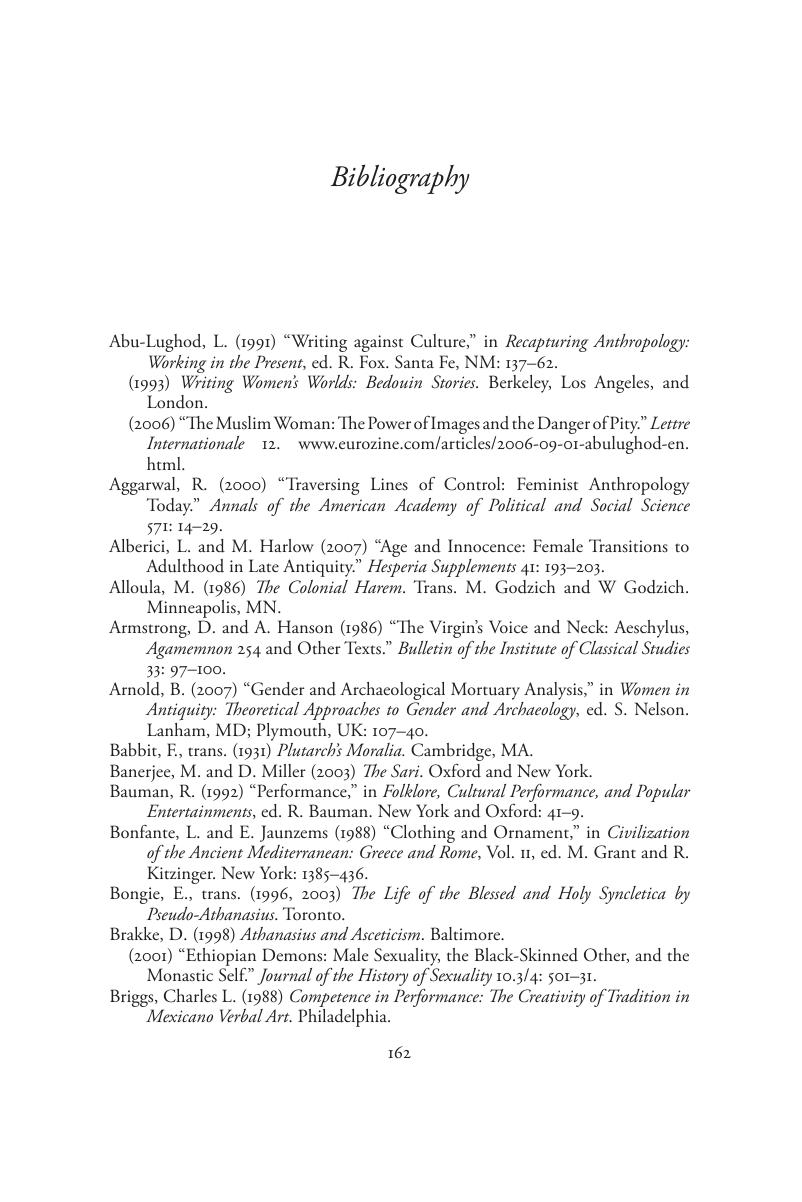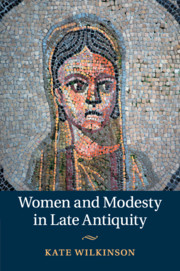Book contents
- Women and Modesty in Late Antiquity
- Women and Modesty in Late Antiquity
- Copyright page
- Contents
- Book part
- Note on sources, translations, and abbreviations
- Introduction
- Chapter 1 Spectacular modesty
- Chapter 2 Apparel, identity, and agency
- Chapter 3 Publicity and domesticity
- Chapter 4 The modest mouth
- Chapter 5 Performance anxiety
- Chapter 6 Modest agencies
- Conclusion
- Bibliography
- Index
- References
Bibliography
Published online by Cambridge University Press: 05 May 2015
- Women and Modesty in Late Antiquity
- Women and Modesty in Late Antiquity
- Copyright page
- Contents
- Book part
- Note on sources, translations, and abbreviations
- Introduction
- Chapter 1 Spectacular modesty
- Chapter 2 Apparel, identity, and agency
- Chapter 3 Publicity and domesticity
- Chapter 4 The modest mouth
- Chapter 5 Performance anxiety
- Chapter 6 Modest agencies
- Conclusion
- Bibliography
- Index
- References
Summary

- Type
- Chapter
- Information
- Women and Modesty in Late Antiquity , pp. 162 - 170Publisher: Cambridge University PressPrint publication year: 2015



